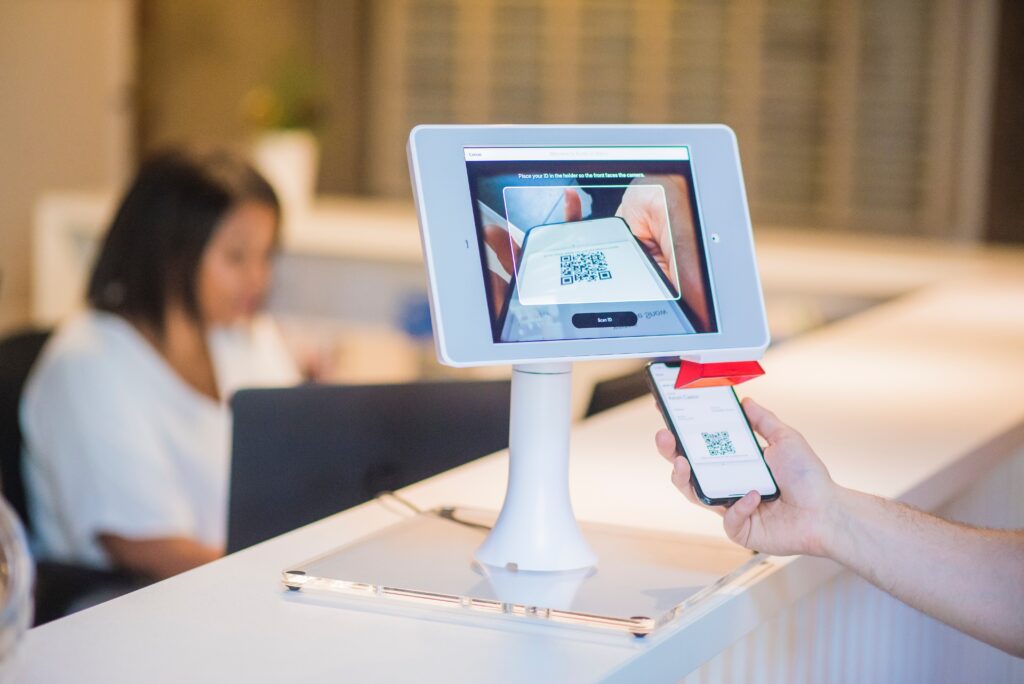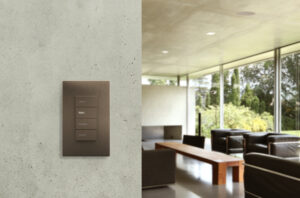It’s true that our expectations for the buildings that we live and work in have changed significantly over the past twenty or so years. As smart technology grows and becomes even more accessible, so do the applications for its use, particularly in the business realm.
Smart buildings are a concept that has been around for decades, but it wasn’t until the public availability of the World Wide Web occurred in 1991 that smart technology really became a significant player in commercial spaces all across the world. Now, we as technology consumers expect (and often demand) a certain level of speed, accessibility, and convenience in the way we work.

Table of Contents
But what exactly are these buzzwords constantly in our ears… “building technology” and “smart buildings” … and how exactly are they changing the ways in which we work?
Defining Building Technologies
Building technologies, also commonly referred to as smart building technologies, are used to optimize a facility’s overall performance. By integrating networked sensors and Internet of Things (IoT) devices for smart automation on the HVAC, lighting, and security systems, you can receive helpful information about each individual system’s overall performances and capabilities.
Once you’ve gotten this level of information, you can find new ways to optimize your facility’s systems in order to uncover a variety of business benefits. Now, thanks to building technologies, there’s been a significant rise in the smart buildings market, which is currently estimated to be valued at $78.2 billion by the year 2030!
What’s a Smart Building?
A smart building is a commercial space that uses automated technology to run its everyday processes. That means technology is instrumental in the way the building’s operations run, such as its lighting, security, and heating or cooling systems — as well as a variety of other elements all around the structure.
There are different types of smart building technologies, each of which serves a different purpose. Some examples of these types of smart tech in the workplace are:
- Smart lighting systems that use sensors and automation controls to turn off lights at specific parts of the day when areas of the building are going unused.
- HVAC energy efficiency programming that helps regulate temperatures in the commercial space to optimize and save on energy costs.
- Heating and cooling automation to control the flow of air within the smart building to focus on the rooms that are currently occupied.
- Smart security cameras and sensors to alert your smartphone or smart device to the comings and goings of your workspace.
Each of these networked systems are instrumental in optimizing workplace efficiency, safety, and security.
Are Smart Buildings the Future for All Businesses?
There are a lot of reasons businesses are continuing to opt to upgrade their commercial spaces to smart buildings. This includes everything from cost and energy savings to increased productivity in the workplace — and more! Here are six ways smart building technology can help to manage your business’ physical space better than ever before.
Energy Efficiency & Sustainability
Smart buildings are known to save energy by automating controls and optimizing systems, which in turn makes the building more energy efficient and sustainable as a whole. By pulling information from the various smart sensors, controls, and meters all around the commercial space, the system can automate and optimize when it runs depending on the facility’s habits and needs.
Cost Savings
Because smart buildings are able to offer real-time metrics and data based on each system’s performance, you can optimize each program’s efficiencies and find new ways to save your business money and avoid potential future business losses.
Increased Business Security
Smart technology has increased business security, both on-site and off. For one, smart security systems allow business owners to remotely monitor their space via camera from anywhere in the world. This is especially important for companies who store confidential information on physical servers or who need to regularly monitor the comings and goings of employees or visitors.
Decreased Reliance on Manual Processes
Smart technology is known for taking a lot of the pressure off of manual processes and those who are responsible for these operations. Whether it’s by integrating voice assistant technology or smart displays into your customer service processes to streamline communications or using IoT technology to automate a production line, smart tech is the best way to decrease a business’ reliance on its manual, time-consuming processes.
Increased Productivity & Employee Happiness
Who doesn’t want to see an increase in employee productivity and overall happiness? Studies have shown that automating processes and integrating smart technology such as audio systems, digital displays, smart thermostats, etc. have been instrumental in helping teams to increase their work output and offer more day-to-day satisfaction in the roles they hold.
Real Insights for Future Growth Decisions
One of the biggest benefits of upgrading your business space to a smart building is that it offers you concrete data and insights that can better inform future business decisions. You’ll receive real-time information on where time, money, and energy is spent within your commercial office space, and will map out a better plan to optimize your business from the ground up.
Don’t stay in the dark about where your business lacks sustainability, productivity and profitability — take control of your building technology and make it work for you!
Let Eco Smart Home Pros Help Your Business Work Smarter
We get it: it can be really overwhelming to know where to start when it comes to outfitting your commercial space with the right technology. Even a quick search on Google might leave your head spinning, asking more questions than you first started with! That’s why the Eco Smart Home Pros team is always here to help.
We are a team of experienced smart tech professionals who know how to ask the right questions and find the perfect solution. Our customized approach ensures that all of your smart building technology works well together and can be expanded to fit new options in the future as your business grows. Let our certified programmers, installers, and computer networking specialists outfit the perfect smart building for your business.
If you’re interested in learning more about working with our team here at Eco Smart Home Pros, schedule a complimentary consultation to get started.
Frequently Asked Questions
What are the business benefits of building technologies?
There are a lot of business benefits that come with leveraging smart building technologies. These can include increased energy efficiency and sustainability savings, overall cost savings, increased business security for the physical and digital assets of the organization, increased employee productivity and overall happiness, decreased reliance on manual labor and processes, and real insights for future developmental opportunities.
What technologies are used in smart buildings?
There are a lot of different types of technologies that can be used within a smart building, depending on the type of business and its needs. Smart building technology examples can include:
- Internet of Things (IoT) systems
- Artificial intelligence
- Machine learning technologies
- Building automation
- Building information modeling (BIM)
- Augmented reality or virtual reality (AR or VR)
There can be any number of systems in use within a smart building, all dependent on the space’s use and purpose, as well as how the system was set up to operate.
What is the role of technology in building?
Depending on the situation, technology’s role within a building is to automate and upgrade a user’s experience with this physical location. This can happen in a number of ways, all depending on the type of technology being used, the purpose of the space, the understanding and level of experience the user has, etc.
What is smart building design?
A smart building is a space that uses its intelligence to collect actionable data from its devices, sensors, systems, and services that are connected. There are typically four smart building components: Internet of Things (IoT) sensors, analytical software, a user interface, and network connectivity. A smart building must have each of these elements in order to function properly.


